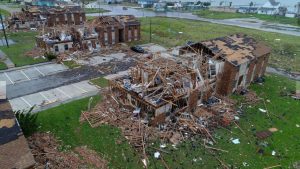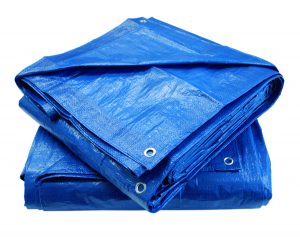 There are many valid reasons to shelter in place; You may not have enough warning of the event; Some people simply can’t evacuate, for physical or medical reasons; Others may evaluate the situation and decide they’re on the fringe of the affected area, and not suffer the full effects of the destruction; Still others may not be willing to evacuate because a family member is separated or missing. Whatever the reasons for remaining in the path of the event, there are things you can do to prepare.
There are many valid reasons to shelter in place; You may not have enough warning of the event; Some people simply can’t evacuate, for physical or medical reasons; Others may evaluate the situation and decide they’re on the fringe of the affected area, and not suffer the full effects of the destruction; Still others may not be willing to evacuate because a family member is separated or missing. Whatever the reasons for remaining in the path of the event, there are things you can do to prepare.
Understand that remaining behind will leave you temporarily isolated from law enforcement, medical help, firefighting support and supplies, perhaps for an extended period. Hopefully, you completed the “Pre-Event” checklist, were not injured during the event, and are now trying to survive until things slowly return to normal.
 While we’d all like to survive the event with our homes intact, there’s no guarantee of that. Severe weather usually breaks windows, blows off siding and rips away shingles and roofs. With that in mind, there are some inexpensive things you can stockpile to protect your property from further damage and your family from the elements. In an emergency you can even use them to make a shelter.
While we’d all like to survive the event with our homes intact, there’s no guarantee of that. Severe weather usually breaks windows, blows off siding and rips away shingles and roofs. With that in mind, there are some inexpensive things you can stockpile to protect your property from further damage and your family from the elements. In an emergency you can even use them to make a shelter.
Duct Tape. This is the universal repair tool, used for everything from repairing windows to preventing blisters. You can never have too much of it.
Rope/Cordage. Following an event, you’ll probably have to repair things, hang things up to dry, or secure a load to the top of your vehicle. The best thing for this is paracord, available at Home Depot for $5/100 feet.
Plastic sheets. If the event damages your home, blows out windows or doors, or damages your car, use cheap plastic to protect against the elements or temporarily replace windows and doors. If the ground is wet, use it as a water barrier if you have to sleep on the ground. You can also hang it to channel rainwater into containers for filtering. I’ve found the 6 mil 10’ x 25’ plastic sheet to be the ideal size ($24 @ Home Depot).
 Heavy Duty Tarps. Following every hurricane, you’ve seen these blue tarps covering damaged roofs, protecting the contents against further water damage. These tarps have many uses, ranging covering firewood, to acting as an improvised tent. They’re also great for dragging stuff around on, waterproofing cargo, and covering “valuables”, like generators, solar panels, carts, wheel barrows, and other items when not in use. When covering roof damage, secure the tarp with roofing nails spaced 12” apart around the perimeter of the tarp. In Home Depot a 10’ x 12’ is under $15, and 12’ x 24’ is under $50.
Heavy Duty Tarps. Following every hurricane, you’ve seen these blue tarps covering damaged roofs, protecting the contents against further water damage. These tarps have many uses, ranging covering firewood, to acting as an improvised tent. They’re also great for dragging stuff around on, waterproofing cargo, and covering “valuables”, like generators, solar panels, carts, wheel barrows, and other items when not in use. When covering roof damage, secure the tarp with roofing nails spaced 12” apart around the perimeter of the tarp. In Home Depot a 10’ x 12’ is under $15, and 12’ x 24’ is under $50.